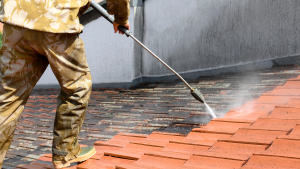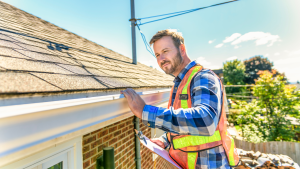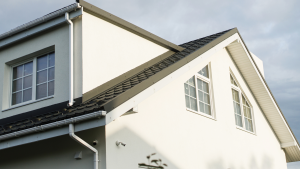Stucco can be a beautiful way to add texture to the outside of your home or business. As a finishing touch, there are many different textures you can use to give your building a unique look or help it blend in with its surroundings. But there’s more to the process of putting stucco on a house than meets the eye.
Stucco is a lot more than just the rough finish we see on the outside. There is at least one more layer under that texture. This “primer” layer gives stucco a solid foundation on which to build the final texture. It also makes stucco stronger, so it can last longer.
There are two different ways to put up stucco. One is called “three-coat stucco,” and the other is “one-coat stucco.” Here, we’ll explain the differences between a one-coat stucco process and a three-coat stucco process, as well as which one would work best for you in East Brunswick.
Stucco with 3 coats
Once upon a time, stucco was always put on in three layers. There are three layers to this, and the top layer has a textured finish.
The bottom layer is made of asphalt-soaked paper and chicken wire that is spread out over a barrier that can stand up to the weather. This is covered with a “scratch coat” made of Portland cement, lime, sand, and water. Horizontal lines give it a rough texture, and then a brown coat is put on with a long trowel. Then it’s ready for the final finish, which can be any texture you want.
The best thing about this is that it’s twice as thick as one-coat stucco, so it’s stronger and lasts longer. This comes at a cost, though, because this process is more expensive and takes much longer than the one-coat stucco process.
One-coat stucco
One-coat stucco doesn’t live up to its name, because it actually has two separate layers. At first, it was done by mixing a colored finish coat into the first mixture. However, the results were not even, so the method was changed to use a second top coat finish.
The scratch coat and the brown coat are mixed together in this process. This makes it possible to finish a job in a few days or sometimes even in a few hours. It requires less work and costs less than three-coat stucco, which is why it has become very popular in recent years.
The problem with this method is that it makes it thinner, which makes it easier to break. Also, it doesn’t last as long as three-coat stucco.
Have faith in the experts
Both one-coat stucco and three-coat stucco have their pros and cons. Contact CMB East Brunswick Stucco & EIFS Repair today to find out more about the differences between a three-coat and a one-coat stucco process and which one would work best for your East Brunswick property. We’ve been helping home and business owners in the area for more than ten years. We’re experts at putting up and fixing stucco. We hope to work with you in the near future.




